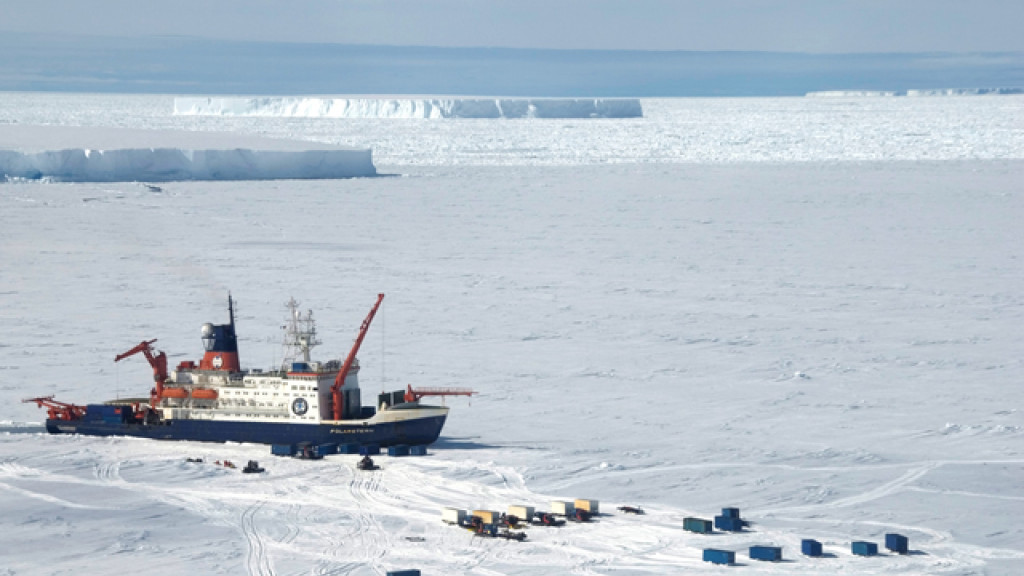Polarstern / CAML expedition: weekly report - Logistics
The last week onboard "Polarstern" was predominantly devoted to logistics. We travelled a distance of about 600 km, often with dense ice coverage being left behind as if we were going through butter. But shortly before we reached the Antarctic continent sea ice became much thicker. Fortunately, luck was on our side. Virtually on time we reached the area in front of Atka Bay where the German Neumayer Station is situated. The station and all its inhabitants depend on the freight provided by the Polarstern. Here, things became a little bit more difficult. Wide areas of the bay, including the usual "ice port" right next to the shelf edge and its alternative further north were covered by solid sea ice. But there was another, third possibility. The 30 m high shelf ice edge was a challenging subject for hobby photographers and professionals alike.
Helicopters brought up hoses to refill eight 20,000-liter tanks with diesel fuel, which were sitting on sledges ready for later transportation to the station by Caterpillars. By trail and error we found out that the Polarstern's cranes were not long enough to unload the cargo onto the ice shelf. Our scientific team from Spain seized the opportunity of a small patch of open water to catch live animals for observation in aquaria. Pablo Lopez, Elisabeth Sañe and Laura Alonso will investigate sessile cnidarians living on the seafloor. The main objective is to find out whether these animals are exclusively feeding on fresh algae from the summer bloom or can they also utilize other food sources under conditions of extended periods of sea ice cover. These findings will be a substantial contribution to answer much broader questions such as how did communities adapt to the particular conditions beneath the Larsen Ice Shelves and how do they differ from "normal" areas.
It was no surprise to old hands that the catch of the Agassiz trawl was bountiful. But for novices new to such shelf ecosystems it was overwhelming, especially for Dorte Janussen, our sponge expert. In this area, sponges are the most distinct group of animals that live on the seafloor. Meanwhile, the ice situation deteriorated due to the compacting of sea ice floes by local currents. The captain and his crew, supported by reconnaissance flights with helicopters, eventually found a place to unload the cargo on the solid sea ice. About half a dozen Caterpillars from the Neumayer Station picked up the load from the ice and transported it to its final destination 20 km away. All logistical work made excellent progress due to the eagerness of all participants and very good weather conditions.
With great relief we are able to say: "It's done!" Finally, after minor delays with our logistical commitments, we are now steaming towards the Antarctic Peninsula, our proposed area of study. The atmosphere aboard Polarstern is exceptionally good. All participants not only had the chance to have a walk on the sea ice and watch Emperor penguins curiously passing by, but also to visit the Neumayer Station. On a sun-swept day with blue skies this was truly an exceptional experience.
On behalf of all the participants, I send warm greetings home.
Yours Julian Gutt

